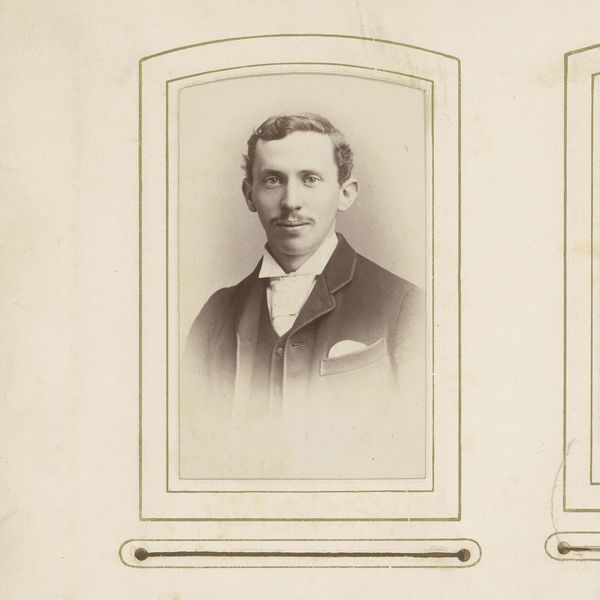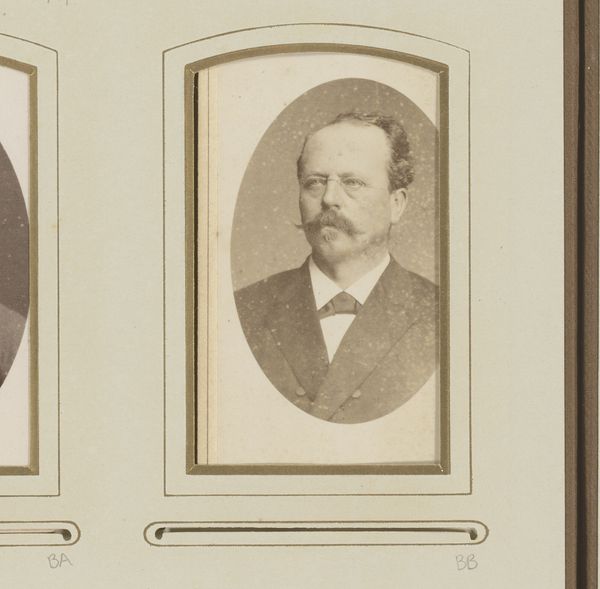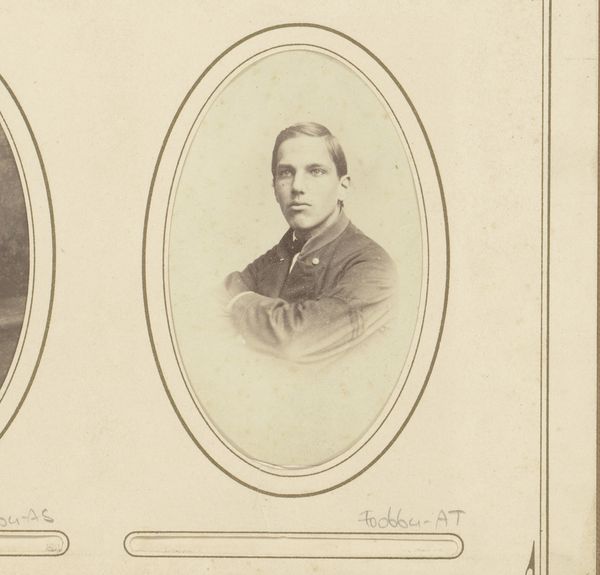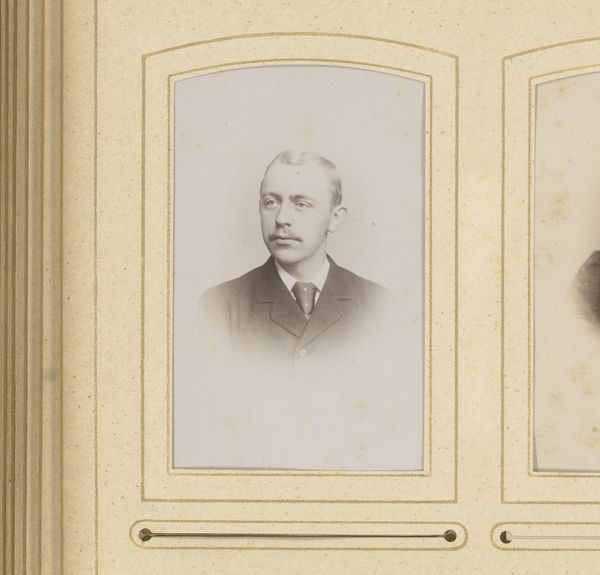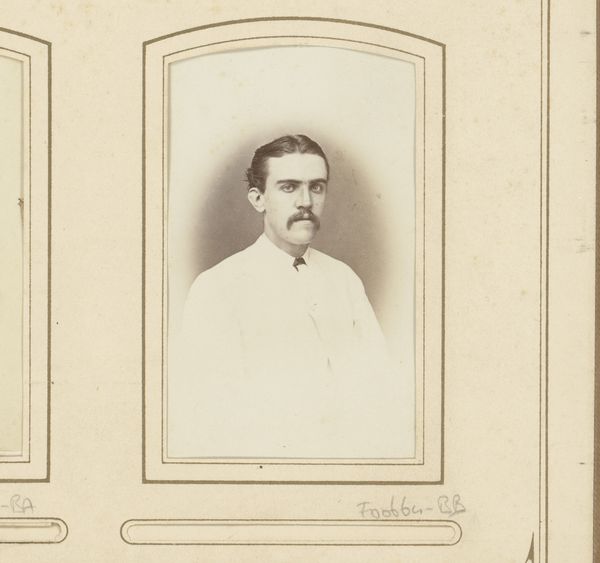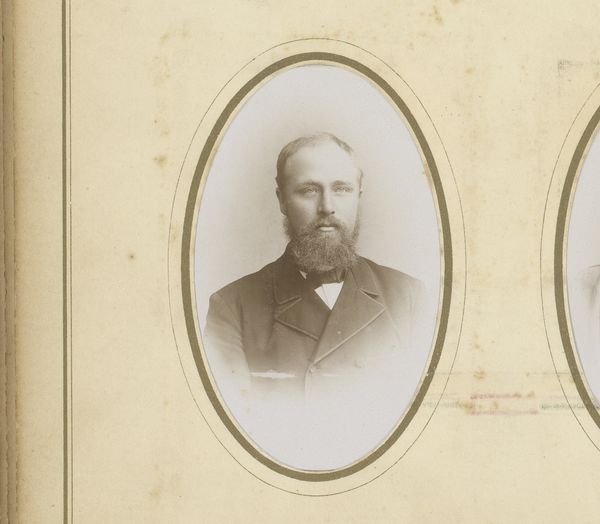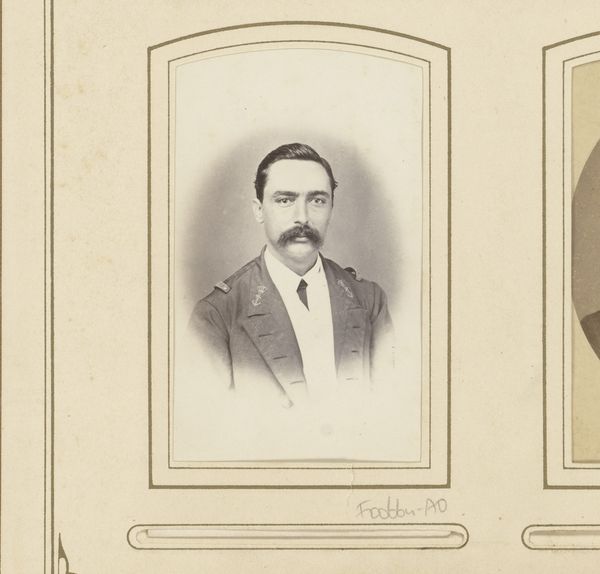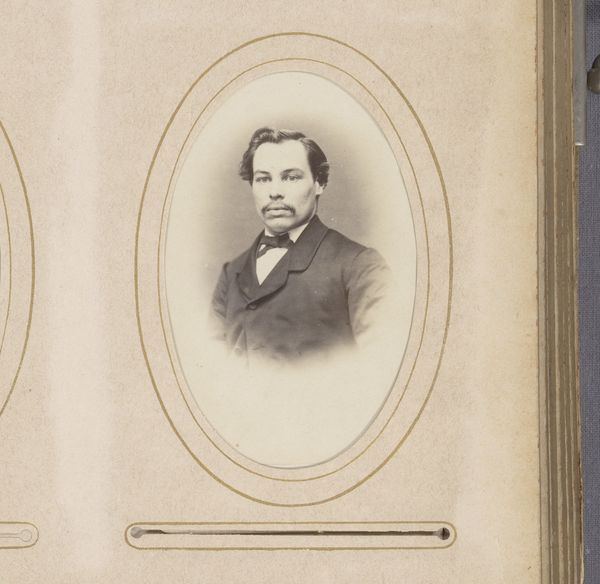
photography, gelatin-silver-print
#
photography
#
historical photography
#
gelatin-silver-print
#
19th century
#
realism
Dimensions: height 85 mm, width 51 mm
Copyright: Rijks Museum: Open Domain
Curator: Let’s turn our attention now to this dignified “Portret van een man,” an albumen silver print created sometime between 1865 and 1880. The photograph is housed right here at the Rijksmuseum. Editor: The sepia tones lend it such an ethereal, melancholic aura. Notice the slightly averted gaze. It gives the subject an air of introspection, a retreat from the present moment. Curator: Exactly. Observe how the tonality reinforces a subtle hierarchy, giving shape to light and dark. Consider the sitter's dress—a neat dark suit paired with a white shirt and bow tie—this creates a complex interplay of geometry that helps to construct an overall formal composition. Editor: These portraits were material objects as much as artistic expressions, commodities of the Victorian era. We might also ask, what was the working life like for those processing these prints? What materials were readily available to produce the picture? Consider how a photographer carefully mixed chemical baths, the type of paper or glass, all of which profoundly affected the image-making and were instrumental in generating artistic results. Curator: A wonderful point! There’s certainly a tension between the formal restraint, seen in the composition and subject's pose, and the materiality inherent to photography during that era. The photographers, Wegner & Mottu, seem to be aiming for a kind of detached realism, very much a 19th-century sensibility. Editor: Also think about the pose itself. Notice how it is positioned alongside what looks to be a photo album with other prints as well. How this print lives on, or its "use-value" gives insight into the broader social economy that was integral to commissioning, receiving, and owning portraits during that time period. Curator: It encapsulates a whole historical epoch—the rigid formalities of Victorian society balanced against the dawn of new technological modes for documentation. A world teetering on the precipice of modernity. Editor: I find it captivating how a straightforward piece of image-making also opens up important questions regarding our historical conditions for seeing. The making and social function of art are as fascinating as its composition.
Comments
No comments
Be the first to comment and join the conversation on the ultimate creative platform.
